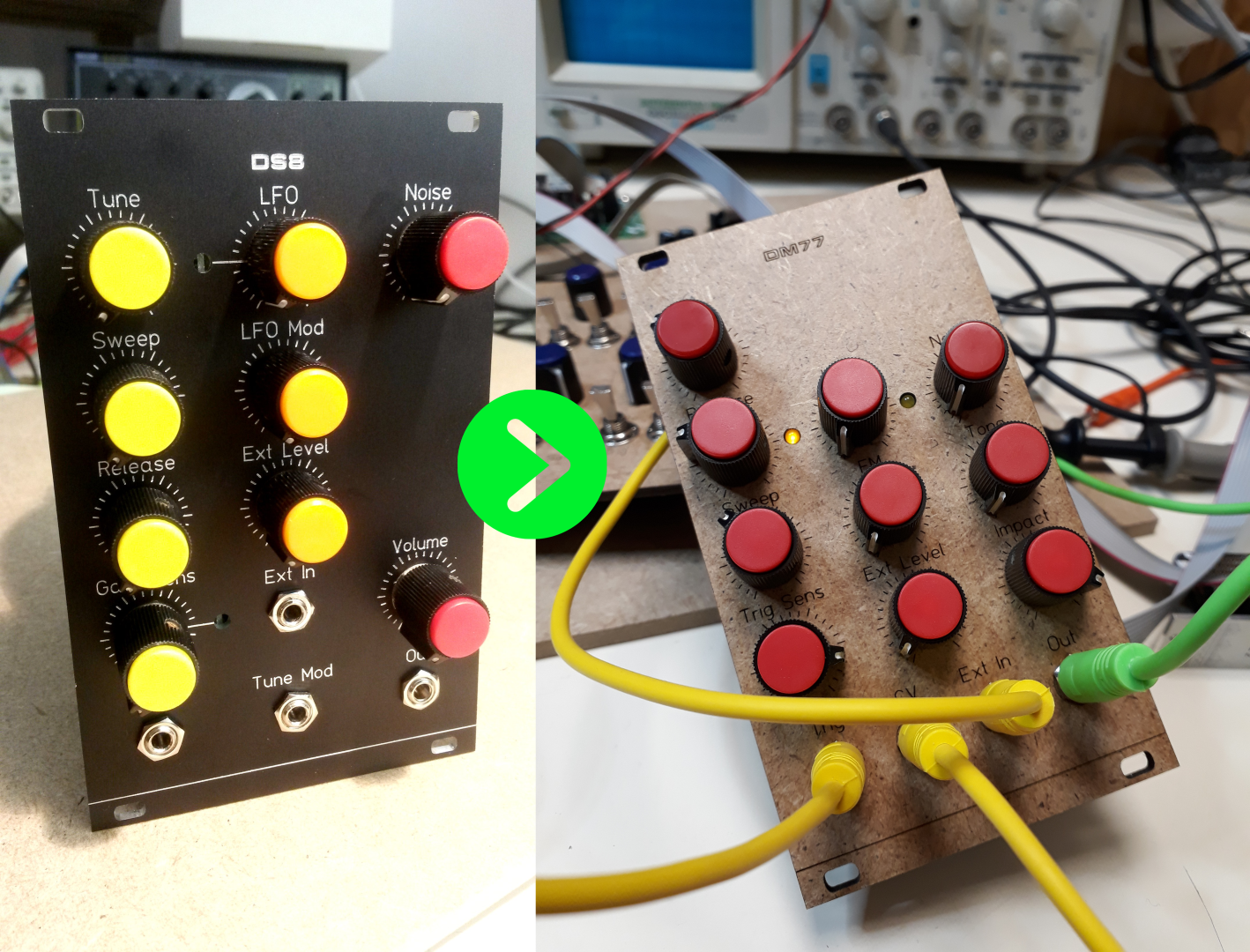
One of my first projects (and one of my first posts here) was about a clone of the classic funky/cheesy drum synth, the Coron DS8. You know the piouuu piouuu drum sounds from disco era? Well it’s probably the DS8.
Continue reading From DS8 to DM77
All posts by david
MFOS SLMS – Demo
A short demo of the SLMS, showing the following features: CV input, Low Pass filter with resonance, VCA, Gate input, Attack/Release with retrig and LFO.
The CV and Gate signals are generated by MIDI interface CVpal by Mutable Instruments. The sequence is generated by Qtractor on Linux.
Recorded with my Tascam DR-08.
Laser cut MDF Euro Panels for the Sound Lab Mini-Synth
I’m having fun at my local Fablab!
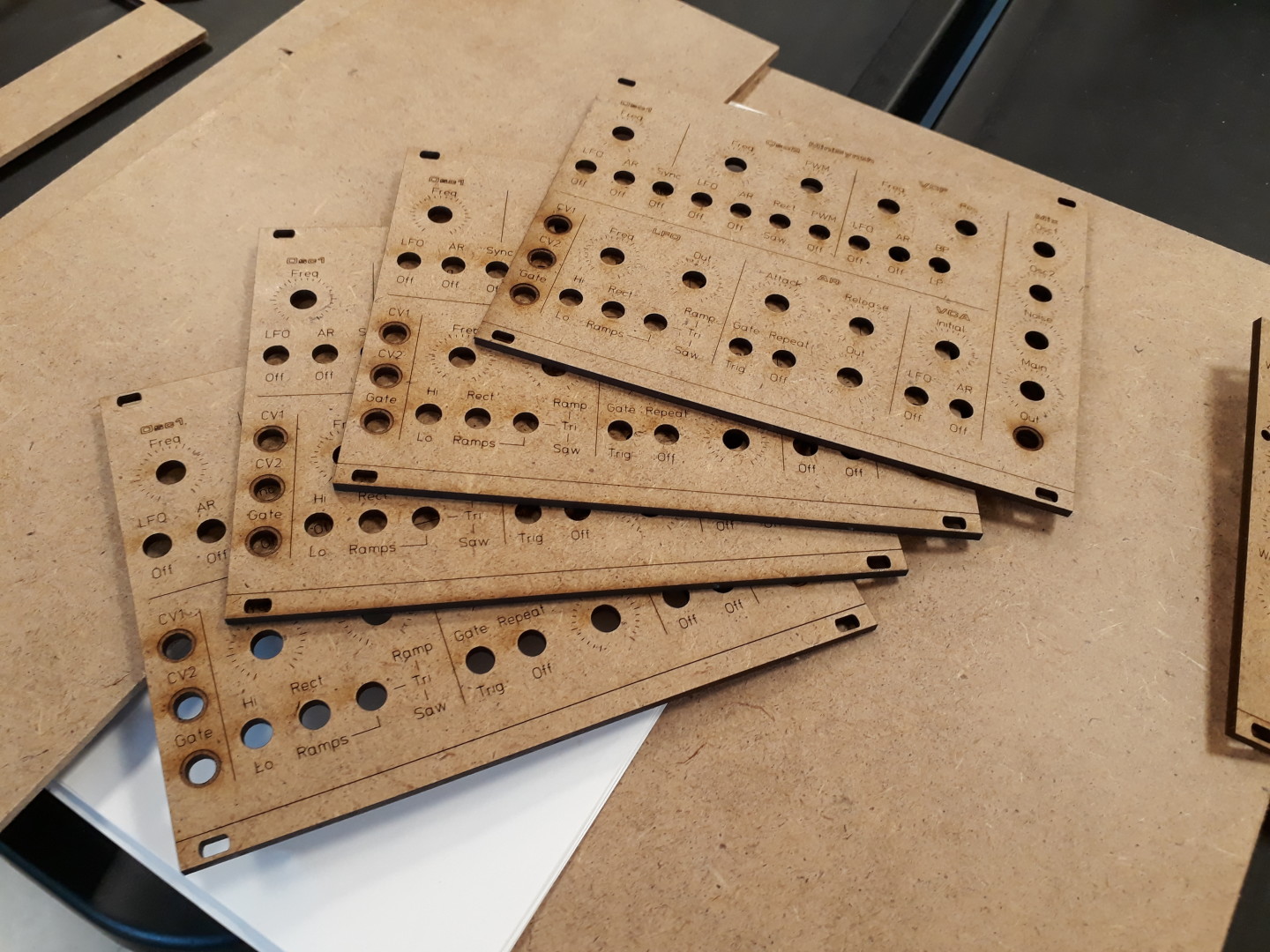
Continue reading Laser cut MDF Euro Panels for the Sound Lab Mini-Synth
MFOS WSG – Demo
A quick and dirty demo on the capabilities of the WSG. Warning, lot of sounds.
MFOS Weird Sound Generator in SMT
The SMT adaptation was a hobby project. The MFOS designs are the property of SynthCube.
If you want to buy PCB for the MFOS synths, please visit musicfromouterspace.com
Here comes my next conversion of Ray’s classic analog synthesizer, the Weird Sound Generator!
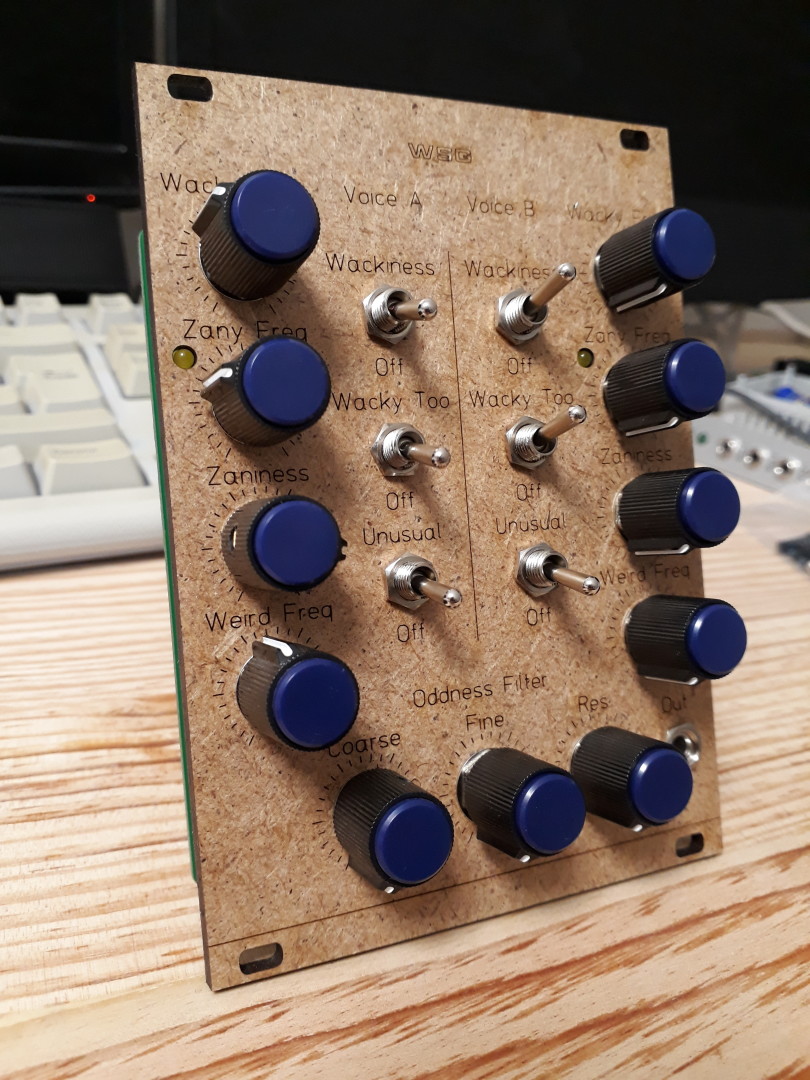
This is the same process as for my previous SMT/Eurorack conversion of the Sound Lab Mini-Synth. The circuit is identical to the original, including component references.
MFOS Sound Lab Mini-Synth in SMT – Assembly Instructions – v1.2
The SMT adaptation was a hobby project. The MFOS designs are the property of SynthCube.
If you want to buy PCB for the MFOS synths, please visit musicfromouterspace.com
MFOS Sound Lab Mini-Synth is a cool analog monophonic synthesizer. The original version has been created by Ray Wilson from Music From Outer Space.
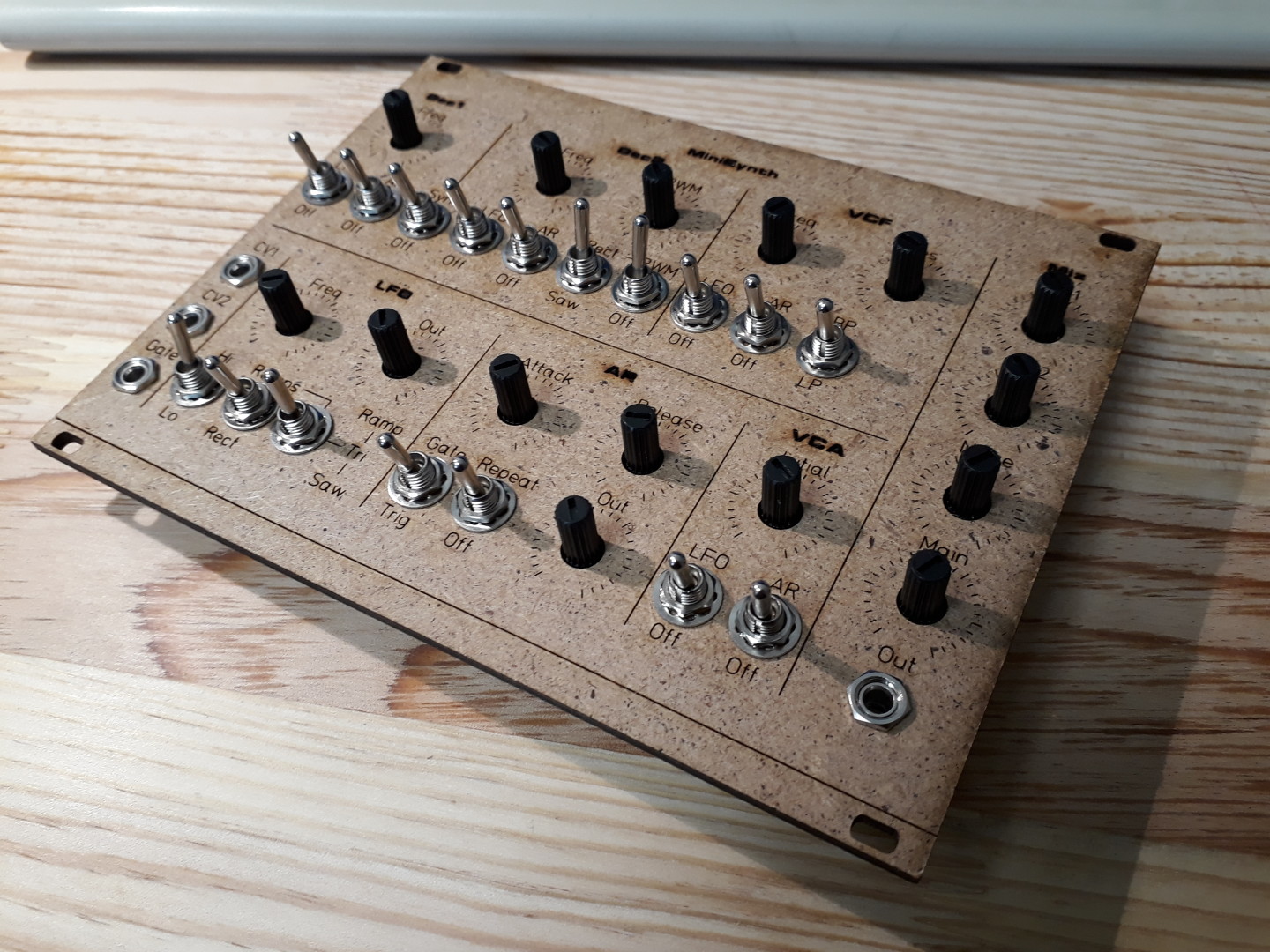
Continue reading MFOS Sound Lab Mini-Synth in SMT – Assembly Instructions – v1.2
KiCad 3D Library – 9mm Alpha/Alps Potentiometers
I keep creating new 3D models for KiCad. This time I made some 9mm potentiometers I use in all my projects.
ALPHA / ALPS 9mm single turn Potentiometers:
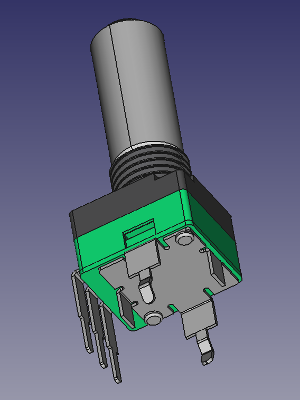
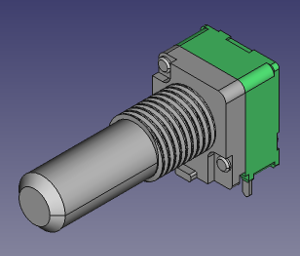
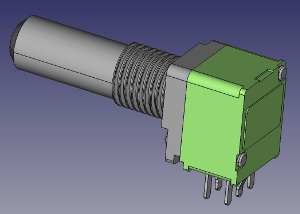
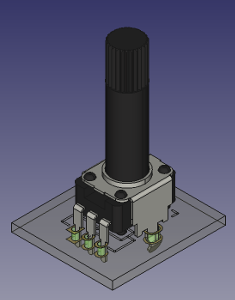
Download on Github : https://github.com/dhaillant/kicad-3dmodels/tree/master/potentiometers
MFOS SoundLab MiniSynth in SMT – 1.2 Update
The SMT adaptation was a hobby project. The MFOS designs are the property of SynthCube.
If you want to buy PCB for the MFOS synths, please visit musicfromouterspace.com
This is an updated version of my SMT conversion of MFOS SoundLab MiniSynth!
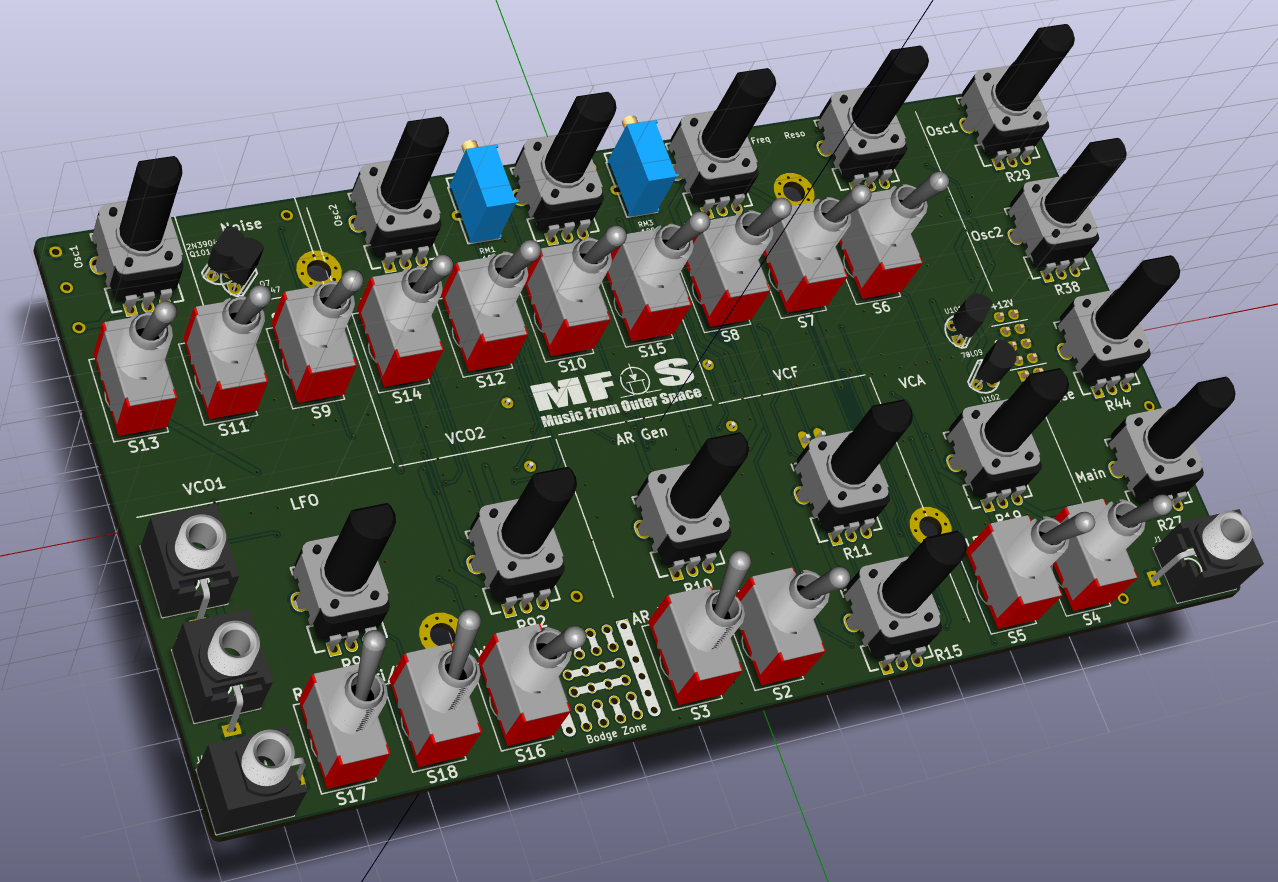
Continue reading MFOS SoundLab MiniSynth in SMT – 1.2 Update
KiCad 3D Library – BOURNS-3296
I’m updating all my current designs in order to incorporate WRL/STEP 3D models. They provide a convenient way to check mechanical issues, especially with cases and front panels.
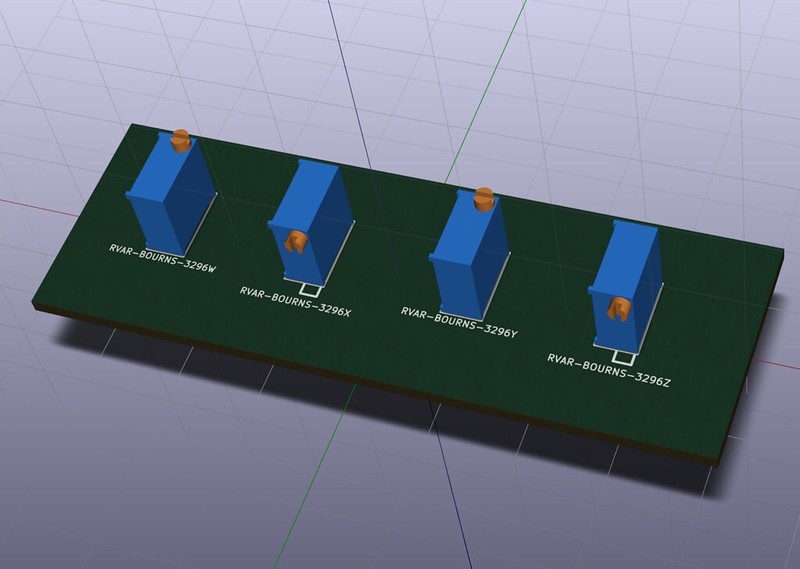
The Bourns 3296 3/8″ Trimpots are missing from the official KiCad 3D Library, so I decided to create my own.
It’s also a useful way to learn how to use FreeCAD and Github.
I’m also using kicad StepUp for model conversion, alignement and scaling.
You can find my 3D lib on GitHub here: https://github.com/dhaillant/kicad-3dmodels
Eurorack Stripboard – Power Supply Tips
Eurorack Stripboards have a dedicated zone layed out for Power Supply connection. You will find here some useful informations on how to use it.
About the power connector, I personnaly recommend to use boxed IDC Headers (HE10 style). They prevent from reverse and misaligned connections. But you can also use simple pin headers (breakable strips).
You also have the choice between 10 and 16 pin connectors. Both are fine. You can just use what is the most convenient to you. If you have plenty of 16/10 pin cables, then choose a 10 pin connector. If you have more 16/16 cables, then use a 16 pin connector…
It is customary to use a 10 pin connector if your module only requires -12/+12V rails. When you see a 10 pin connector on a module you immediately understand the module doesn’t require the +5V rail.
The 10 pin connector is soldered as on the picture below:
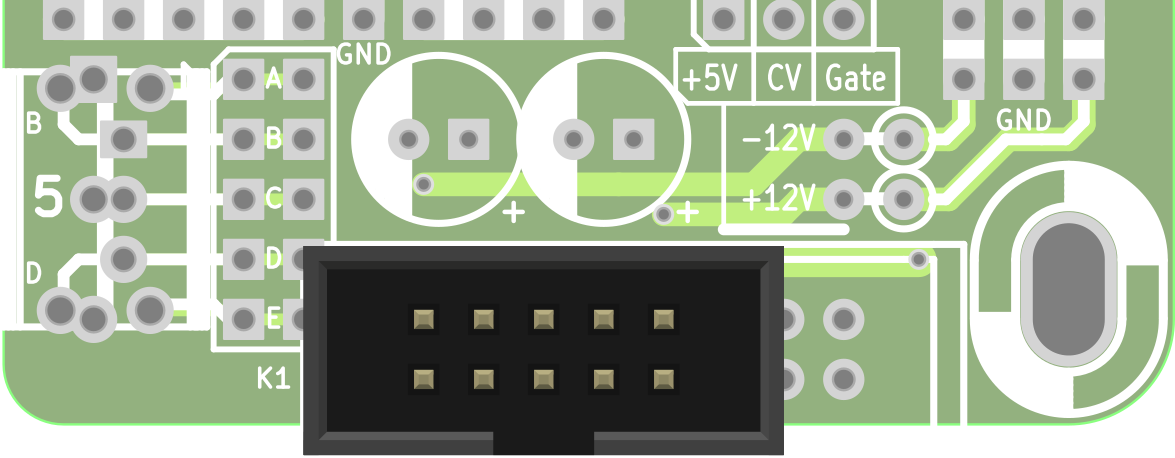
The capacitors are recommended only on rails where you actually draw current. Especially on modules with switching components (blinking LEDs…) who can create noise on your rails. 1 to 10µF is ok. The voltage rating should not be under 25V.
Diodes protect your module. Wire them as shown on the picture below:
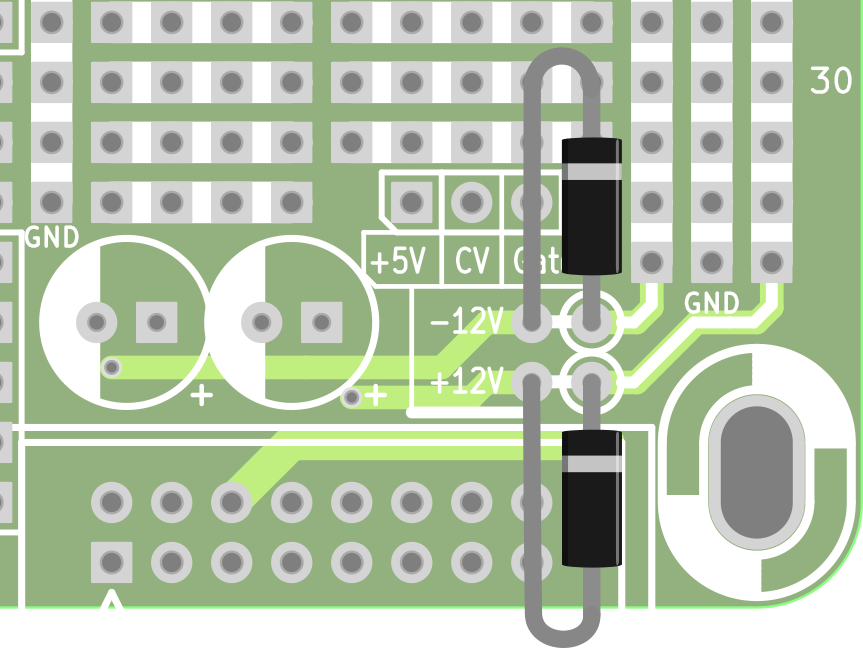
Or you can just skip them and use jumper links instead. The diodes are only for protection purpose. They block reverse voltages in case of bad Power Cable or incorrectly powered Bus.
Any 1N400x is ok. Use Schottky Diodes instead if you require lower forward voltage drop. Silicon Diodes such as 1N400x will lower the power rail by, at least, 0.7V: 12 – 0.7 = 11.3V only. Schottky Diodes have a forward voltage drop of roughly 0.4V, giving you 11.6V on your rail.
NB, the diodes should have been placed before the capacitors to create an effective LP filter… and help protect the filtering caps too in case of reverse Power supply polarity. So I encourage you to add a capacitor on each rail after the diodes instead of the initial dedicated area.